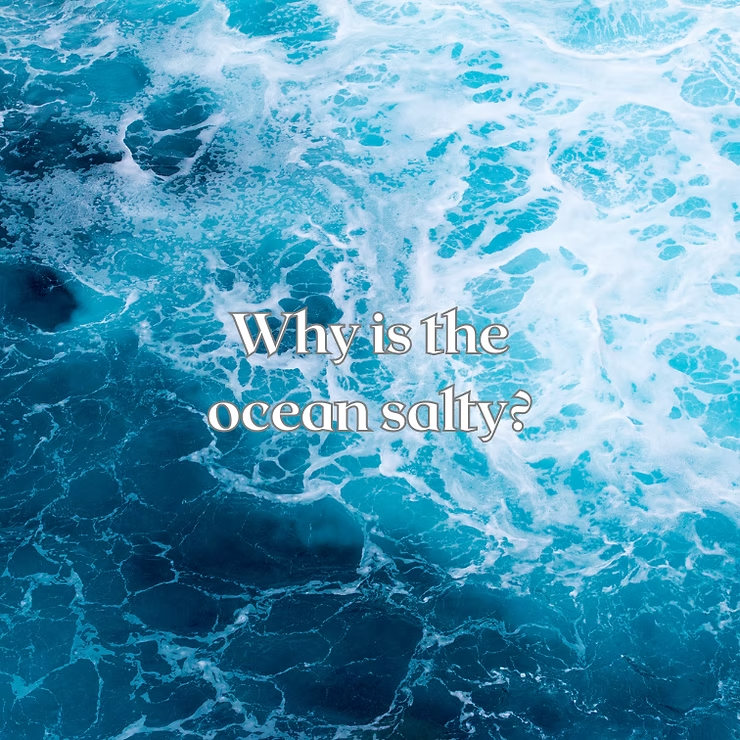Introduction
The ocean covers more than 70% of Earth’s surface and is famously salty, unlike the freshwater rivers that flow into it. This article explores why the ocean is salty, looking at the role of evaporation, rivers, mineral accumulation, natural balance, and human activities. By understanding these factors, we can appreciate the delicate equilibrium that sustains life in our oceans.
Key Takeaways
- The ocean’s salt comes from dissolved minerals accumulated over millions of years.
- Evaporation increases salinity by leaving salt behind as water vapor rises.
- Rivers supply freshwater but little salt, diluting seawater without making it fresh.
- Natural processes maintain a balance between salt input and output.
- Human activities like pollution and climate change can disrupt ocean salinity.
The Salty Ocean Mystery
The Science Behind Salinity
Salinity refers to how salty water is, and for the ocean, that average is about 3.5%—roughly 35 grams of salt for every liter of water. Evaporation plays a major role: when surface water evaporates, salt is left behind, making the water saltier. Rivers bring freshwater, but since they carry relatively little salt compared to the ocean’s vast volume, the overall salinity remains high.
The Role of Evaporation
Evaporation is like nature’s salt concentrator. Only water molecules evaporate, leaving salt particles behind. Regions with high temperatures and little rainfall, such as the Red Sea, often have much saltier waters due to intense evaporation. This process ensures that once salt enters the ocean, it tends to stay there.
The Influence of Rivers
Rivers add freshwater, which slightly dilutes seawater but cannot remove the existing salt. Some rivers carry more dissolved minerals depending on the geology of their regions. For example, the Amazon River discharges massive amounts of freshwater, lowering nearby salinity, but overall ocean saltiness remains stable. Without rivers, the ocean would gradually grow saltier over time.
The Ocean’s Salt Balance
Over millions of years, minerals from rocks and volcanic activity have entered the ocean, but natural processes keep levels balanced. Precipitation, melting ice, and circulation redistribute salt and water. If evaporation exceeds rainfall, salinity rises; if rainfall dominates, it decreases. This balance is vital for marine ecosystems.
The Impact of Human Activities
Human actions are shifting the ocean’s salt balance. Industrial and agricultural pollution add chemicals and salts, while climate change intensifies evaporation and alters rainfall. Reduced river flows from water extraction also mean less freshwater dilution, contributing to regional salinity changes. Protecting this balance is essential for ocean health.
Conclusion
The ocean is salty because of a long history of mineral accumulation, the effects of evaporation, and the input of freshwater from rivers. Natural processes maintain a delicate equilibrium, but human activities now pose challenges to this balance. By recognizing the science behind ocean salinity, we can better understand its importance and take steps to protect marine ecosystems for future generations.
Frequently Asked Questions
Why is the ocean salty?
Because of dissolved minerals from rivers, volcanic activity, and evaporation concentrating salts.
Why aren’t rivers salty?
They constantly bring fresh water from land, carrying fewer dissolved salts than seawater.
How does evaporation affect salinity?
Evaporation removes water as vapor but leaves salts behind, increasing concentration.
Do all oceans have the same salinity?
No. Factors like rainfall, temperature, and freshwater inflows create regional variations.
Can human activity change ocean salinity?
Yes. Pollution, freshwater withdrawals, and climate change can alter the ocean’s salt balance.
How does salinity affect marine life?
Different species tolerate different salinity levels; sudden changes can disrupt ecosystems.

